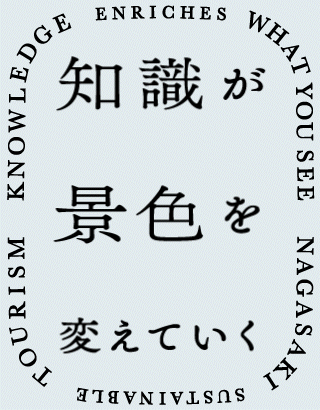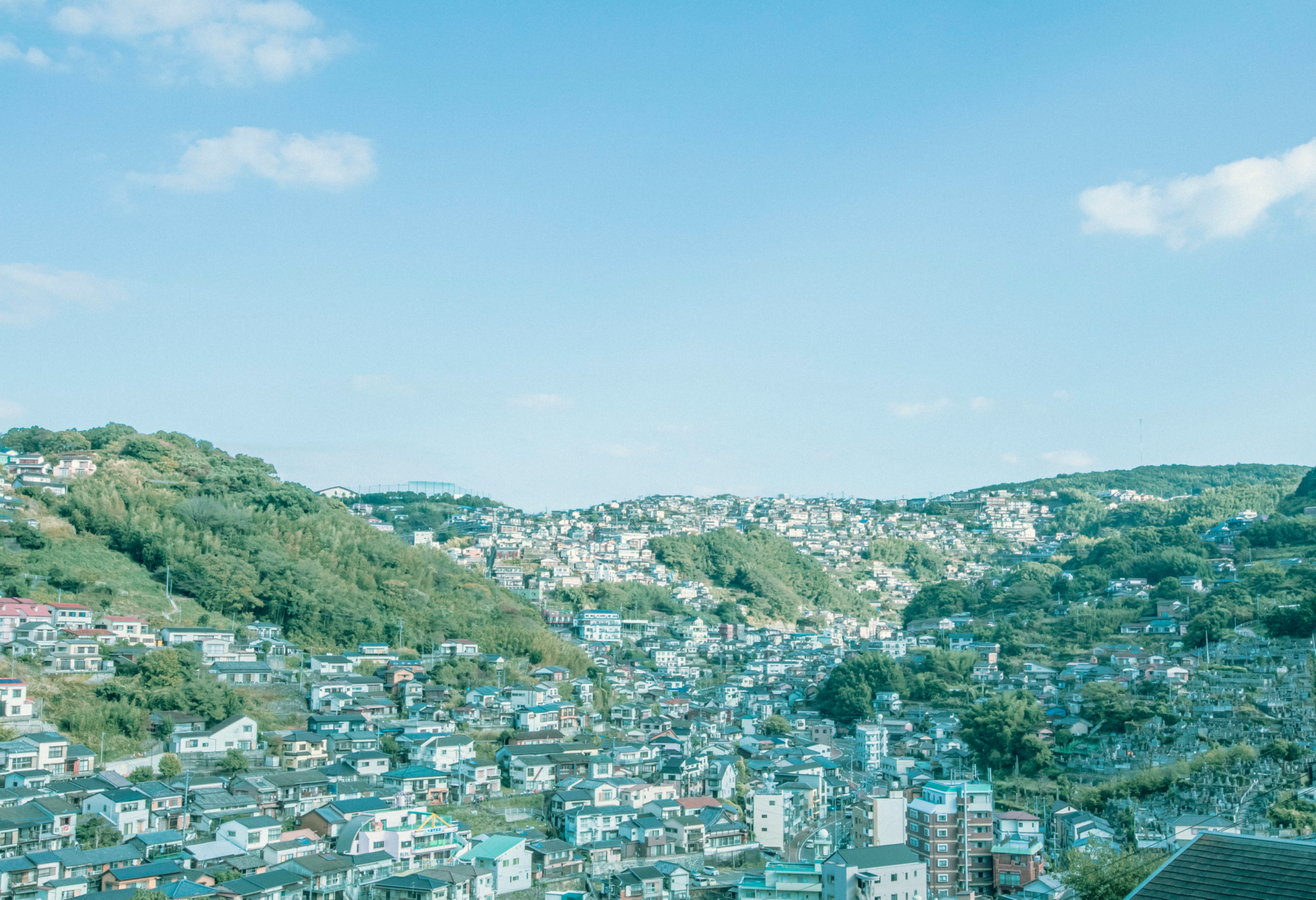




Plan
As long as there are new encounters,
the ways people live will be passed down.
The first use of steam engines in Japan
was in Nagasaki, where modern coal mining was carried out.
The coal that was mined was used in the production of iron,
which was essential for industrial development.
Steelworks were established in Nagasaki
for the production of warships.
This became the foundation
for the development of the shipbuilding industry.
It is also believed to be one of the reasons
behind the dropping of the atomic bomb.
Embracing and blending the cultures of Europe and China
has transformed the culture and traditions of Nagasaki.
An experience that allows you to explore
the history and drama of Nagasaki’s development,
while connecting with the people,
culture, and traditions that exist here.
This is what we call sustainable tourism.
1
An ambitious merchant set foot into the port town.
Situated in Minamiyamate, an area originally developed as a foreign settlement, this residence is perched on a hill overlooking Nagasaki Port. Exploring the life of Thomas B. Glover, the businessman who once lived here, offers valuable insight into the pivotal historical events that shaped Nagasaki's development.
2
A combination of high-quality coal and the craftsmanship of swordsmiths.
Located in the southwest of Nagasaki City, nestled in a bay on a peninsula near the coal mine islands, lies a small fishing town known for its Kayaki knives. Once home to around 30 blacksmith workshops, only a few remain today. Here, you can experience the craftsmanship of knife-making, a skill passed down for over 100 years, rooted in the tradition of swordsmithing.
3
Seeking the power to stop the advancing decay.
Hashima Island, commonly known as Battleship Island (Gunkanjima), has a significant history in coal mining. In 1868, Thomas Glover invited the Irish engineer Samuel Morris to introduce Western-style coal mining techniques at Takashima Mine. About 30 years later, Hashima Mine, which was producing high-quality coal, was transferred to Mitsubishi. The production at Hashima Mine eventually grew to surpass that of Takashima Mine.
4
If we continue to sow the seeds of peace, flowers will surely bloom somewhere, someday.
We visit the area around the epicentre to understand the horrific consequences of the atomic bomb dropped in 1945, the events that led to its use, the devastation it caused, the suffering of the people, the city’s subsequent recovery, and the significance of preserving and sharing these stories.
5
To inherit means to renew.
Located in Ichiriki, within the historic Teramachi district where temples and shrines have stood since the 17th century, this area, established in 1813, offers a unique cultural experience. Guests have the opportunity to engage with the proprietress, staff, and chefs while enjoying traditional dance and music performances by the geisha of Nagasaki Kenban.
6
Greetings arise naturally in a narrow alleyway.
The Minamiyamate area, located to the south of the city centre, was a place where foreigners were permitted to reside after Japan opened its doors to the outside world. With limited flat land in Nagasaki, the population grew alongside industrial development, and people moved higher up the mountains in search of residential land. The slopes came to be known as the Hill of Humanity.
7
One does not surrender one's way of life to the whims of the wind.
The kites of Nagasaki, known as hata, are believed to have been introduced in the 17th century by Indonesians aboard Dutch ships. Experience the art of making and flying these kites, an essential part of the Hataage festival, one of Nagasaki's three major events.
8
So that everyone can make champon a lasting part of their memories of Nagasaki.
The birthplace of champon, Shikairou, was founded by a restaurant owner who wanted to provide affordable, nutritious meals to students from China. Just across the street, a new version of champon and sara udon has been created, catering to vegans, vegetarians, and those with food allergies.